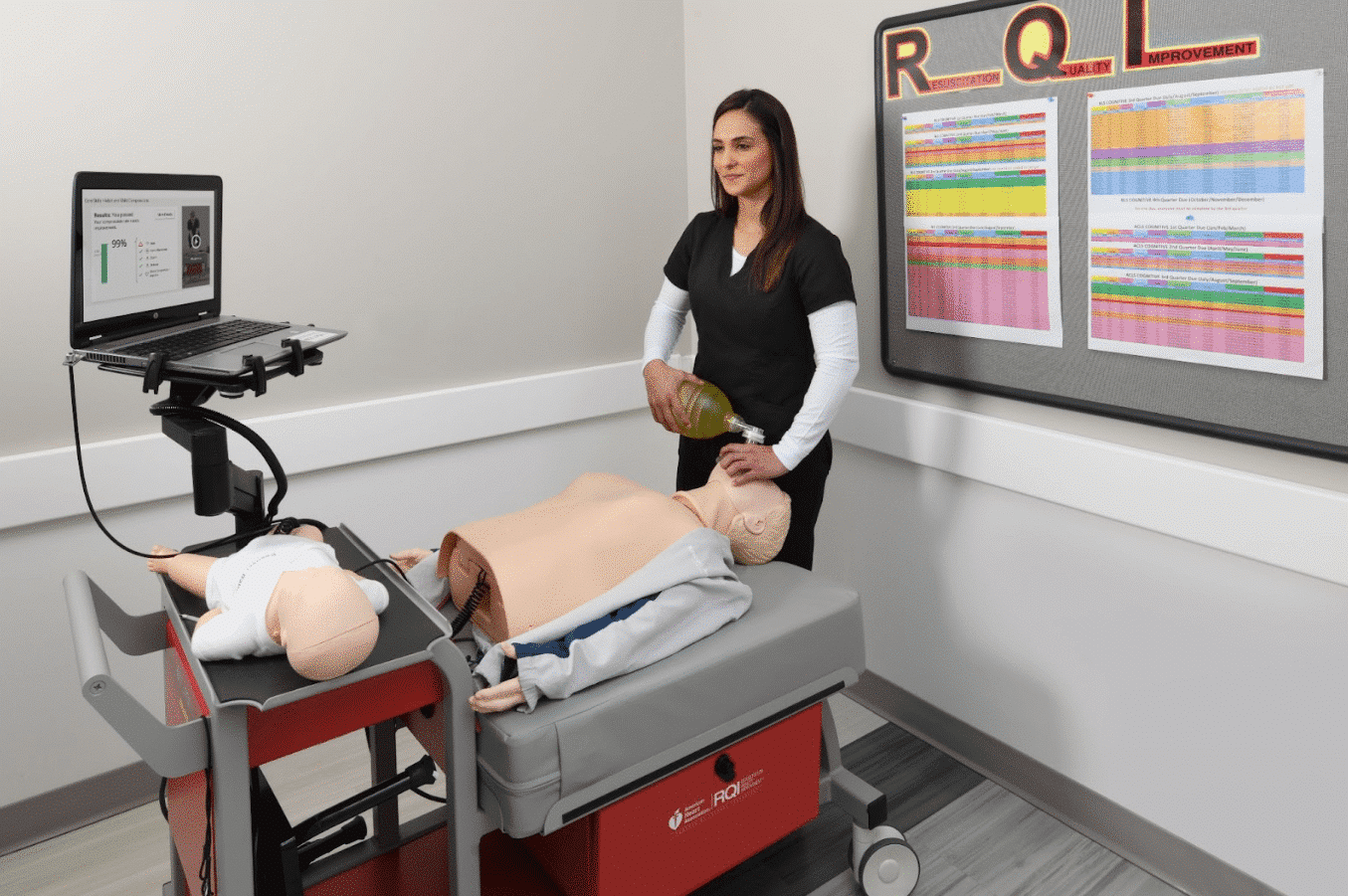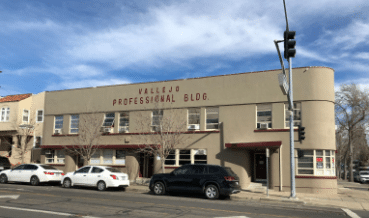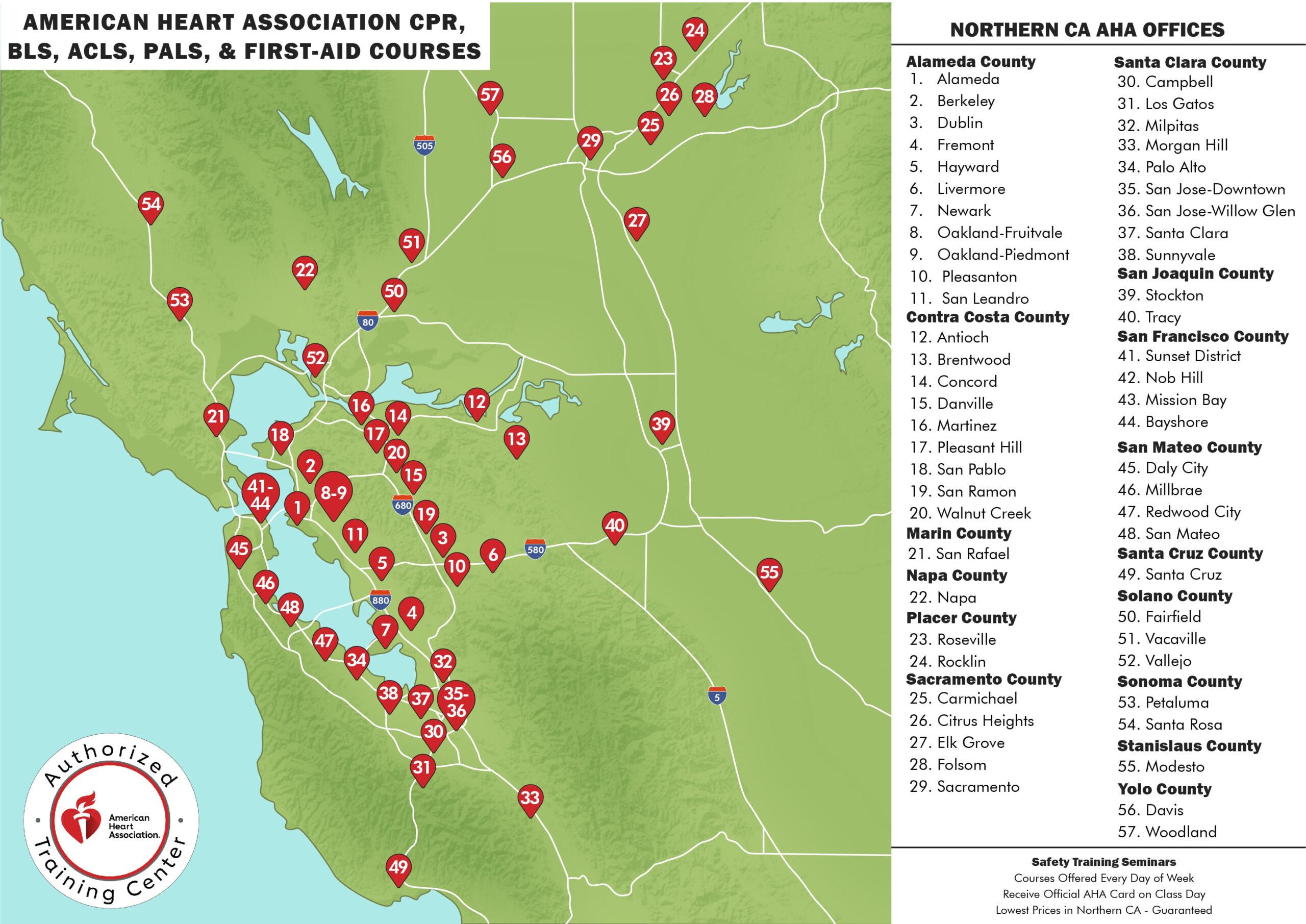
American Heart Association Course Registration
Safety Training Seminars offers American Heart Association CPR, BLS, ACLS, and PALS courses in Vallejo, CA. This office is close by the surrounding cities of American Canyon and Mare Island. If you live in Solano County, you can take a BLS, ACLS, or PALS course near you.
American Heart Association Course Registration
Safety Training Seminars offers American Heart Association CPR, BLS, ACLS, and PALS courses in Vallejo, CA. This office is close by the surrounding cities of American Canyon and Mare Island. If you live in Solano County, you can take a BLS, ACLS, or PALS course near you.
What is American Heart Association RQI
The American Heart Association RQI (Resuscitation Quality Improvement) program is one of the most popular, modern, and efficient ways for medical and healthcare professionals to receive their official American Heart Association BLS, ACLS, and PALS certification cards.
Three Easy Steps
1. Take the American Heart Association online course at home (a few hours).
2. Arrive to one of our 45 local offices and practice with the VAM (voice assisted manikin).
3. Receive your certification card on the day of the class.

About American Heart Association RQI
Entry Instructions for Vallejo CPR Classroom
Vallejo, California Medical Facilities: A Beacon of Healthcare Excellence
Introduction
Vallejo, California, nestled in the heart of Solano County, is a city that boasts not only picturesque landscapes but also a robust healthcare system that serves its diverse population. With a rich history and a commitment to providing top-notch medical care, Vallejo’s medical facilities have become a beacon of healthcare excellence in Northern California.
Diverse Medical Facilities
One of the strengths of Vallejo’s healthcare system lies in its diversity of medical facilities. The city is home to several hospitals, clinics, and specialty centers, ensuring that residents have access to a wide range of medical services. Among the notable facilities is the Sutter Solano Medical Center, a full-service hospital offering comprehensive care, from emergency services to specialized surgeries. This state-of-the-art facility is known for its cutting-edge technology and compassionate staff, making it a pillar of the Vallejo medical community.
Another vital component of Vallejo’s healthcare infrastructure is the Kaiser Permanente Vallejo Medical Center. As part of the renowned Kaiser Permanente network, this facility provides integrated healthcare services, including primary care, specialty care, and advanced diagnostics. Patients benefit from the convenience of having all their medical needs met under one roof, ensuring continuity of care and efficient service delivery.
Community-Centric Approach
Vallejo’s medical facilities take a community-centric approach to healthcare. They actively engage with the local population through outreach programs, health fairs, and educational initiatives. These efforts aim to promote wellness and preventative care, reducing the overall burden on emergency services. Vallejo residents are encouraged to take charge of their health, thanks to the guidance and support provided by the city’s medical institutions.
Moreover, many of Vallejo’s healthcare providers actively collaborate with local organizations to address pressing community health issues. For instance, partnerships between the Solano County Health Department and Vallejo medical facilities have led to successful vaccination campaigns and health education programs, particularly during public health crises.
Innovation and Technology
Vallejo’s medical facilities embrace innovation and technology to provide the best possible care to their patients. From state-of-the-art diagnostic equipment to telemedicine services, these facilities continuously invest in cutting-edge tools and techniques. This commitment to innovation allows them to stay at the forefront of medical advancements, benefitting the residents of Vallejo.
Telemedicine, in particular, has played a crucial role in ensuring access to care, especially during the COVID-19 pandemic. Vallejo’s healthcare providers quickly adapted to virtual consultations, enabling patients to receive medical advice and treatment from the safety of their homes. This innovative approach not only protected the community from potential virus transmission but also expanded healthcare access to those who might face transportation or mobility challenges.
Healthcare Professionals
Vallejo’s medical facilities are staffed with dedicated and highly skilled healthcare professionals. Physicians, nurses, technicians, and support staff work collaboratively to provide top-quality care. The commitment of these professionals to their patients and the community is evident in their tireless efforts, especially during challenging times.
Additionally, Vallejo’s medical facilities are actively involved in medical education and training. Many serve as teaching hospitals and partner with local educational institutions to nurture the next generation of healthcare professionals. This commitment to education ensures a steady supply of skilled medical personnel and further strengthens the city’s healthcare system.
Conclusion
Vallejo, California, is not just a beautiful city with stunning waterfront views; it is also a place where healthcare excellence thrives. The city’s diverse medical facilities, community-centric approach, commitment to innovation, and dedicated healthcare professionals make it a model for healthcare delivery in Northern California. Whether you’re a resident or a visitor, Vallejo’s medical facilities are there to ensure your health and well-being are in capable hands.
Life-Saving Skills: Exploring CPR, BLS, ACLS, and PALS Classes
In the realm of emergency medical care, few skills are as crucial as Cardio-Pulmonary Resuscitation (CPR) and Advanced Cardiac Life Support (ACLS), Basic Life Support (BLS), and Pediatric Advanced Life Support (PALS) techniques. These life-saving techniques form the backbone of first response and medical intervention, often making the difference between life and death in critical situations. Let’s delve into the significance of each of these classes and their role in maintaining public health and safety.
Cardio-Pulmonary Resuscitation (CPR): CPR is a fundamental life-saving technique that can be administered by trained individuals to sustain blood circulation and provide artificial respiration when a person’s heart has stopped beating. CPR involves a combination of chest compressions and rescue breaths, aimed at keeping oxygenated blood flowing to vital organs until professional medical help arrives. CPR classes provide participants with the skills to recognize cardiac arrest, perform effective chest compressions, and deliver rescue breaths. These classes are vital for both medical professionals and laypersons, empowering them to respond swiftly and effectively in emergencies.
Basic Life Support (BLS): BLS takes CPR skills to the next level by incorporating additional techniques and equipment usage. BLS classes are designed for healthcare providers, including doctors, nurses, paramedics, and emergency medical technicians (EMTs). Participants learn how to assess a patient’s condition, deliver high-quality CPR, and use automated external defibrillators (AEDs) to restore a regular heartbeat. BLS training emphasizes teamwork, effective communication, and quick decision-making to optimize patient outcomes during cardiac emergencies.
Advanced Cardiac Life Support (ACLS): ACLS is an advanced course tailored for healthcare professionals who are involved in the management of cardiac arrest and other cardiovascular emergencies. ACLS builds upon the foundation of BLS and focuses on identifying and treating potentially life-threatening conditions such as stroke, myocardial infarction, and arrhythmias. Participants learn to interpret electrocardiograms (ECGs), administer medications, and perform advanced airway management. ACLS classes equip medical personnel with the skills to respond confidently to complex cardiac scenarios, ensuring comprehensive care for critically ill patients.
Pediatric Advanced Life Support (PALS): PALS training is geared towards healthcare providers who care for infants and children during emergencies. Pediatric patients have unique physiological needs, making PALS classes essential for those working in pediatrics, emergency medicine, and intensive care. PALS courses cover topics such as pediatric assessment, effective respiratory support, and the management of pediatric cardiac arrest. Participants gain the knowledge and skills necessary to provide specialized care and interventions that can make a critical difference in the outcomes of pediatric emergencies.
NRP, or Neonatal Resuscitation Program, is a critical medical initiative that focuses on saving newborns who struggle to breathe at birth. This specialized training equips healthcare providers with the skills to assess and manage respiratory distress in infants. NRP emphasizes a systematic approach, teaching effective ventilation techniques and chest compressions if needed. Regularly updated guidelines ensure that participants stay current with the best practices in neonatal care. By enhancing healthcare professionals’ abilities to respond swiftly and effectively to newborn respiratory challenges, NRP plays a vital role in improving infant survival rates and ensuring a healthier start to life.
First-aid classes offer indispensable life skills that empower individuals to respond confidently in emergencies. These structured courses cover a spectrum of situations, from minor injuries to critical incidents, teaching participants how to provide immediate care before professional help arrives. Participants learn to administer CPR, treat wounds, manage choking, and address common health crises. Hands-on training fosters essential skills and boosts confidence, enabling swift and effective action in times of need. First-aid classes are invaluable for workplaces, homes, and communities, creating a network of capable first responders. Mastering these skills not only saves lives but also fosters a safer and more prepared society.
Incorporating these life-saving techniques into healthcare systems, workplaces, and communities can significantly enhance the response to medical emergencies. Quick and effective interventions provided by individuals trained in CPR, BLS, ACLS, and PALS can stabilize patients and improve their chances of survival before professional medical assistance arrives. Moreover, these classes promote a culture of preparedness, empowering individuals to step forward and take action when faced with emergency situations.
In conclusion, American Heart Association CPR, BLS, ACLS, and PALS classes play an indispensable role in equipping individuals with the skills and knowledge needed to respond effectively to various medical emergencies. These courses bridge the gap between bystander assistance and professional medical care, ultimately contributing to improved patient outcomes and increased survival rates. By investing in these life-saving classes, individuals and healthcare professionals alike become vital links in the chain of survival, ensuring that timely and appropriate care is delivered when it matters most.
Our Blog

Why CPR is Important in Healthcare
Cardio-pulmonary resuscitation (CPR) is a life-saving technique that everyone should know how to perform. It involves a series of actions designed to help someone who

7 Common CPR Myths Debunked
Cardiopulmonary resuscitation (CPR) is a life-saving technique that can help a person in the event of cardiac arrest. It involves chest compressions that are performed

Importance of Workplace CPR & First-Aid Training
Accidents can happen anytime and anywhere, even in the workplace. Although we may try our best to ensure a safe and healthy work environment, we



